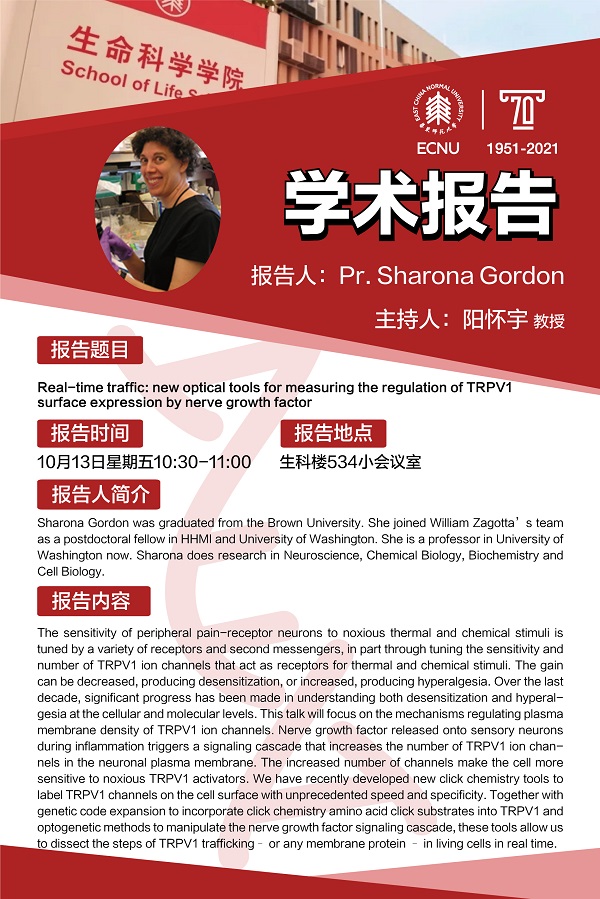报告题目:Real-time traffic: new optical tools for measuring the regulation of TRPV1 surface expression by nerve growth factor
报 告 人:Sharona Gordon, professor, University of Washington
主 持 人:Pro. Huaiyu Yang
报告时间:2023年10月13日 10:30-11:00
报告地点:闵行校区生命科学学院534小会议室
报告人简介:
Sharona Gordon was graduated from the Brown University. She joined William Zagotta’s team as a postdoctoral fellow in HHMI and University of Washington. She is a professor in University of Washington now. Sharona does research in Neuroscience, Chemical Biology, Biochemistry and Cell Biology.
报告内容:
The sensitivity of peripheral pain-receptor neurons to noxious thermal and chemical stimuli is tuned by a variety of receptors and second messengers, in part through tuning the sensitivity and number of TRPV1 ion channels that act as receptors for thermal and chemical stimuli. The gain can be decreased, producing desensitization, or increased, producing hyperalgesia. Over the last decade, significant progress has been made in understanding both desensitization and hyperalgesia at the cellular and molecular levels. This talk will focus on the mechanisms regulating plasma membrane density of TRPV1 ion channels. Nerve growth factor released onto sensory neurons during inflammation triggers a signaling cascade that increases the number of TRPV1 ion channels in the neuronal plasma membrane. The increased number of channels make the cell more sensitive to noxious TRPV1 activators. We have recently developed new click chemistry tools to label TRPV1 channels on the cell surface with unprecedented speed and specificity. Together with genetic code expansion to incorporate click chemistry amino acid click substrates into TRPV1 and optogenetic methods to manipulate the nerve growth factor signaling cascade, these tools allow us to dissect the steps of TRPV1 trafficking– or any membrane protein – in living cells in real time.
